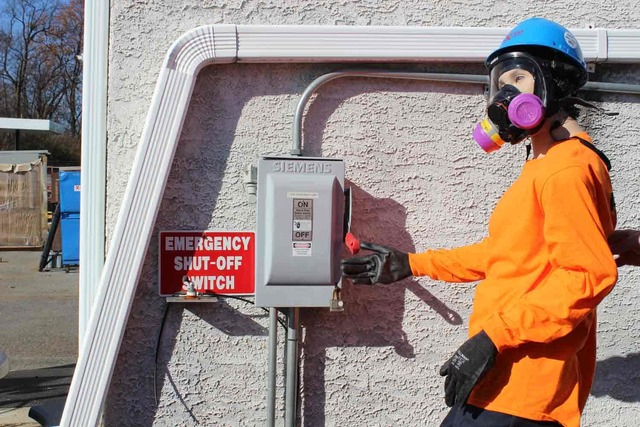Most of us are familiar with static electricity. We all have walked across the rug and reached for the doorknob, only to have a spark jump from our hand to the knob.
Static electricity, as a source of ignition for flammable vapors, gases, and dusts, is a hazard common to a wide variety of industries in Alaska. A static spark can occur when an electrical charge accumulates on the surfaces of two materials that have been brought together and then separated. One surface becomes charged positively and the other surface becomes charged negatively. If the materials are not bonded or grounded, they will accumulate a sufficient electrical charge capable of producing a static spark that could ignite flammable vapors, gases, and dusts. Some common processes capable of producing a static ignition are as follows:
- The flow of liquids (petroleum or mixtures of petroleum and water) through pipes or fine filters.
- The settling of a solid or an immiscible liquid through a liquid
- The ejection of particles or droplets from a nozzle
- The vigorous rubbing together and subsequent separation of certain synthetic polymers
Preventing static electricity as an ignition source can be accomplished through bonding, grounding, or possibly substitution. Bonding is the process of connecting two or more conductive objects together by means of a conductor. Grounding is the process of connecting one or more conductive objects to the ground. If grounding or bonding is not possible, substituting maybe an alternative.
Remember, taking the time to bond or ground when working around flammable vapors, gases, and dusts will help prevent a serious accident.

